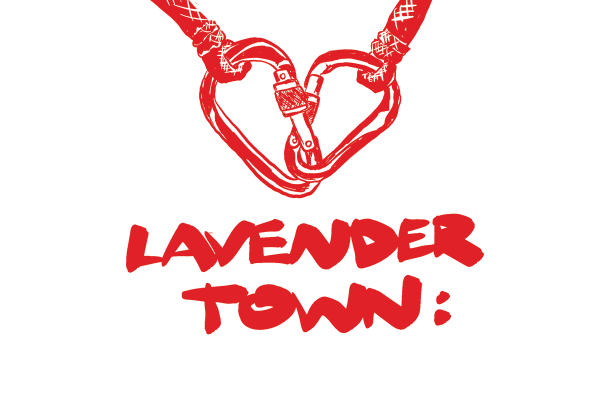Rock climbing
What is it about this sport that attracts queer women? It’s true that climbing gyms are often swarming with shirtless, sweaty “boulder bros”, and outdoor walls can crawl with trad climbers sporting greying beards and bulging veins, but climbing is overall a diverse and inclusive sport. Influential British mountaineer and pioneering climber Geoffrey Winthrop Young, who was gay, wrote in 1927 of the mountains offering him “a sanctuary for all the higher impulses, all the less sordid hopes and imaginings which visited me anywhere through the years.”
In 21st century Dunedin, heading to Resistance Climbing on Moray Place or to the cliffs at Long Beach doesn’t offer such a total escape from a homophobic society. Nevertheless, there’s an element of reprieve from social mores that come with climbing up walls for fun - choosing not to operate on the horizontal plane objectively goes against expectations. It makes sense that, as a minority, queer women (and queer people in general) are drawn to a sporting community that inherently challenges social norms. Then again, maybe it’s just the carabiners and improved finger strength.
Getting the bus
It’s not true that all queer people can’t drive, but anecdotal evidence would suggest there’s a grain of truth in the meme. Combine that with an environmentally-motivated obsession with affordable and reliable public transport – which isn’t inherent to any sexuality but does seem to be especially popular amongst young queer people – and you end up with catching public transport together becoming a viable date.
However, this time-honoured tradition is under threat from unreliable public transport systems and a love of private car ownership. There are small reprieves in the continued reliability of the traditional lesbian private vehicle (the Subaru) and, as my flatmate insisted, the benevolence of Straight Friends With Cars. However, for those who can’t or won’t buy a car, our ways of getting around are in peril. Someone needs to say it: introducing Aotearoa to light rail isn’t just an environmental and economic necessity, it’s gay rights.
Lesbian midnight
Student parties can often feel overwhelmingly straight. There’s a whole realm of social politics one could blame for this, but there’s also an element that is entirely our fault as WLW (women who love women): our adherence to lesbian midnight.
For the uninitiated, lesbian midnight is also known as “9pm”. With mind-boggling precision, you’ll notice your WLW friends gapping it as soon as it looks like pres could be ending – that is, if they don’t pull an Irish goodbye. This phenomenon primarily applies to coupled up lesbians, and could be an early indicator of imminent ‘U-hauling’.
Why are gay women, especially those in relationships, so susceptible to the beckon of an early bedtime over a big night out? Maybe it’s the promise of great sex; maybe it’s to get to the farmers market early tomorrow (see below); maybe it’s some innate sapphic behaviour. While it might sadden you to watch your loved up lesbian friend heading home on a Saturday while most children still haven’t been sent to bed, try to keep a positive outlook – they’ll still always be down for a Sunday morning brunch.
Farmers market soft launch
As anyone who experienced the bitter awkwardness of watching period drama Bridgerton with their Jane Austen-loving mother will know, in the 19th century courting couples would ‘promenade’, or take a leisurely stroll together to make known their budding relationship. Like many old-fashioned concepts, this hasn’t disappeared, just evolved; it was basically the Regency era’s soft launch.
While the soft launch might be largely constrained to Instagram stories, there are still times when it trickles out into real life. One of these is going on a date to the Dunedin Farmers Market. Really, it’s the perfect place to go while it’s still early days dating someone – the crowds force you to walk close to each other, the long queues for coffee or pastries leave no option but to talk, and the build-your-own-bouquet stall just has “lesbian” written all over it. It's hard to get it wrong. If you’re pining after another queer girl right now, this is your sign to plan out your best curated-but-effortless op shop fit and ask her if she’s busy next Saturday morning.
Courtship displays
Anyone who is single and looking to mingle has their own subtle (or not so subtle) ways of indicating their availability to other compatible lonely souls. For LGBTQI+ people, there’s often an added challenge brought about by necessity rather than choice: needing to fly under the heterosexual radar whilst advertising your queerness to other queer people. Quite frankly, it sucks to have to do this, but we’d be lying if we didn’t admit that we don’t have fun with it. It’s the human version of the elaborate mating rituals tropical birds do in Planet Earth.
Lesbian signalling is a constantly evolving art, not least of all because our methods of quietly calling out to each other are just so steezy they get appropriated by edgy straight boys. Carabiners and thumb rings are often cited as the most iconic ways lesbians have historically signalled to each other, but these are now just as likely to be sported by a fashion-forward Castle St lad. Lesser known is the historical significance of work boots – looking at you, Doc’s – as a mode of lesbian signalling, but their ubiquity now means you’d be harder pressed to find an Otago student who doesn’t own a pair, making them rather useless to identify anything by. Despite this, WLW still manage to find each other in the crowd. Anyone can clip some climbing equipment onto their belt loop, but there’s a certain je ne se quois to it that only queer women have mastered.



